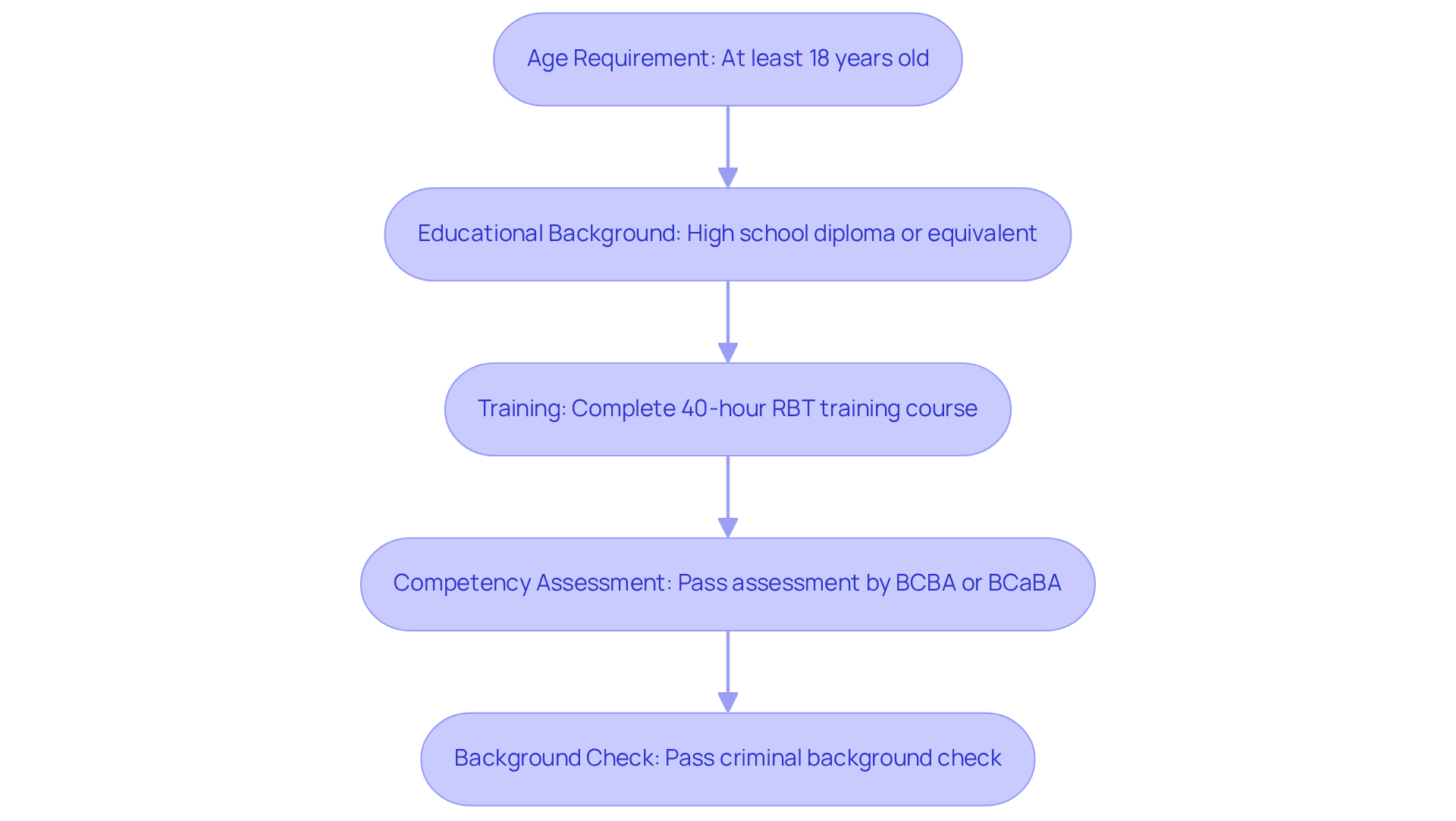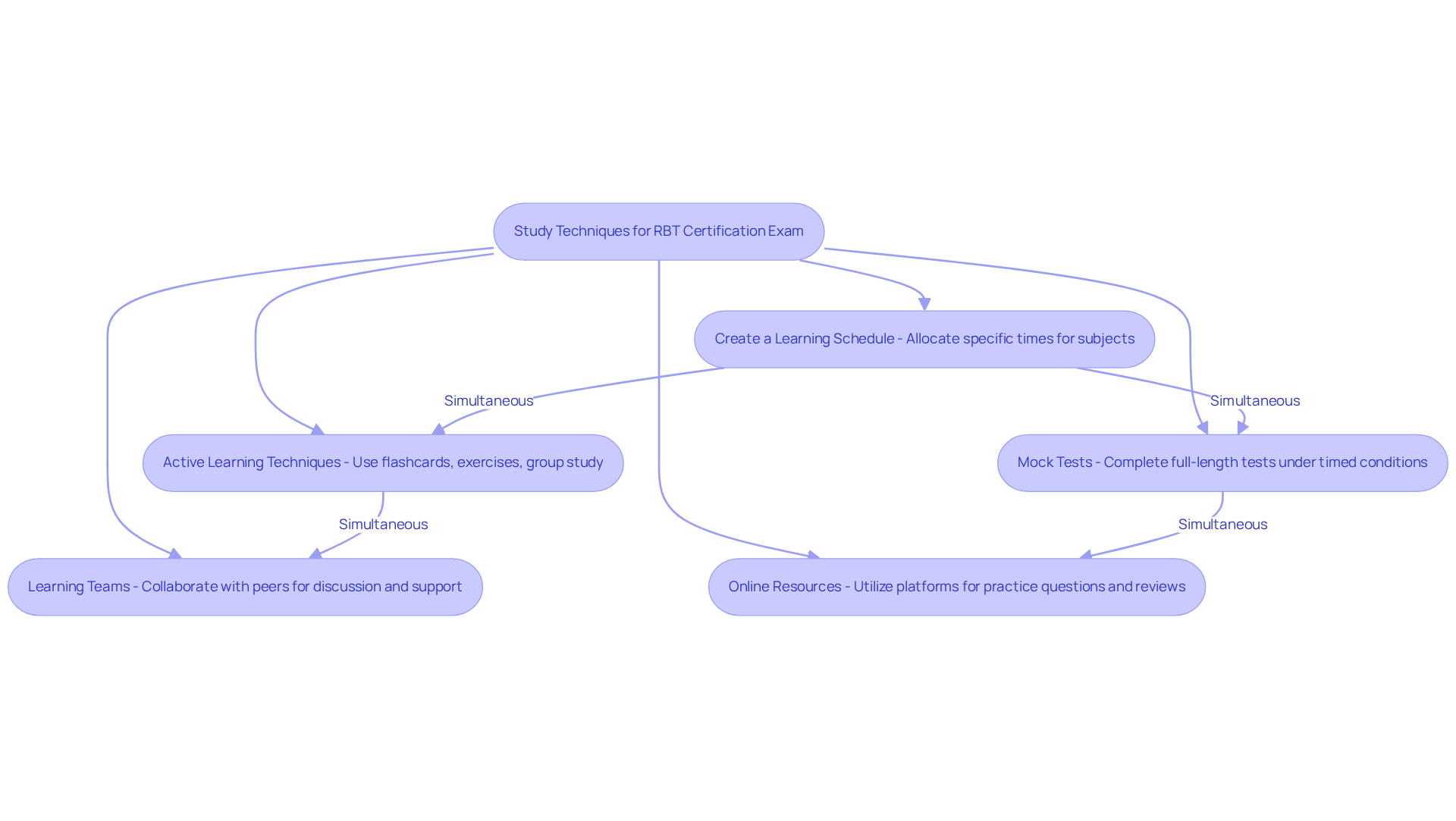September 9, 2025

To excel in the RBT certification exam, candidates must undertake essential steps.
This article outlines these steps, highlighting the necessity of thorough preparation. Consider the significance of mastering measurement and assessment. Additionally, practical strategies like mock testing and managing exam day anxiety can significantly enhance your chances of success.
Are you ready to take your preparation to the next level?
Becoming a Registered Behavior Technician (RBT) is a pivotal step toward a rewarding career in Applied Behavior Analysis. However, the journey to certification can often seem overwhelming. This guide unveils essential strategies and insights designed to empower candidates, enabling them to approach the RBT certification exam with confidence and clarity.
What key steps can transform preparation from daunting to successful?
How can candidates ensure they are fully equipped to excel on exam day?
To become a Registered Behavior Technician (RBT), candidates must fulfill specific eligibility criteria:
Meeting these requirements is crucial, as it sets the foundation for a successful career in Applied Behavior Analysis. Candidates who adhere to these standards can confidently advance to the next steps in their RBT certification exam journey, ultimately contributing to effectively supporting individuals with autism and other developmental disabilities.

The RBT certification exam is a critical evaluation that measures candidates on essential subject areas vital for effective application in Applied Behavior Analysis. These areas encompass:
To excel in the RBT certification exam, candidates should prioritize their study efforts across these content areas. Engaging in active learning techniques—such as summarizing concepts, utilizing flashcards, and taking mock assessments—can significantly enhance retention and comprehension. Notably, the assessment consists of 85 multiple-choice questions, with a distribution of content areas reflecting their significance in practice. Mastery of these subjects not only prepares candidates for the assessment but also equips them with the essential knowledge required for effective client support.

To maximize your study efforts for the RBT certification exam, consider implementing the following techniques and resources:
By incorporating these methods into your learning routine, you will greatly boost your retention and comprehension of the content, ultimately increasing your likelihood of succeeding in the RBT certification exam on your initial try.

On the day of the RBT certification exam, implementing effective strategies can significantly enhance your chances of success.
By adhering to these strategies, you can approach the RBT certification exam day with confidence and preparedness, setting the stage for a successful outcome.

Mastering the RBT certification exam is crucial for those pursuing a career in Applied Behavior Analysis. Understanding the requirements, content areas, and effective study strategies is essential. By grasping the eligibility criteria and committing to the necessary training and assessments, candidates lay a solid foundation for their journey. This commitment not only prepares them for the exam but also enhances their ability to support individuals with autism and other developmental disabilities effectively.
Key insights highlight the importance of familiarizing oneself with the exam's content areas, including:
Engaging in structured study techniques—such as creating a learning schedule, participating in mock tests, and utilizing online resources—can significantly bolster retention and comprehension. Moreover, implementing practical strategies on exam day, like arriving early and managing anxiety, can further enhance performance.
Ultimately, success in the RBT certification exam extends beyond merely passing a test; it is about equipping oneself with the knowledge and skills to make a meaningful difference in the lives of clients. Embracing these strategies empowers candidates to approach the exam with confidence and readiness, reinforcing the vital role they will play in the field of behavior analysis.
What are the age requirements to become a Registered Behavior Technician (RBT)?
Candidates must be at least 18 years old to qualify for RBT certification.
What educational background is necessary for RBT certification?
A high school diploma or an equivalent credential is required to become an RBT.
What type of training is needed to become an RBT?
Candidates must complete a 40-hour RBT training course through a certified provider that aligns with the Behavior Analyst Certification Board (BACB) Task List.
What topics are covered in the RBT training course?
The training covers essential topics such as ethical considerations, data collection, and behavior intervention strategies.
Is there an assessment required for RBT certification?
Yes, candidates must pass a competency assessment conducted by a qualified supervisor, specifically a BCBA or BCaBA, to demonstrate their readiness to perform RBT tasks.
Is a background check required for RBT certification?
Yes, a criminal background check is necessary to ensure the safety of clients and to uphold ethical conduct in ABA therapy.
Why is it important to meet the RBT certification requirements?
Meeting these requirements is crucial as it sets the foundation for a successful career in Applied Behavior Analysis and enables candidates to effectively support individuals with autism and other developmental disabilities.
Our expert recruitment strategies and AI-driven sourcing ensure that you receive top-notch candidates quickly, without compromising on quality. Whether you’re looking for BCBAs, Clinical Directors, or RBTs, we’ve got you covered.